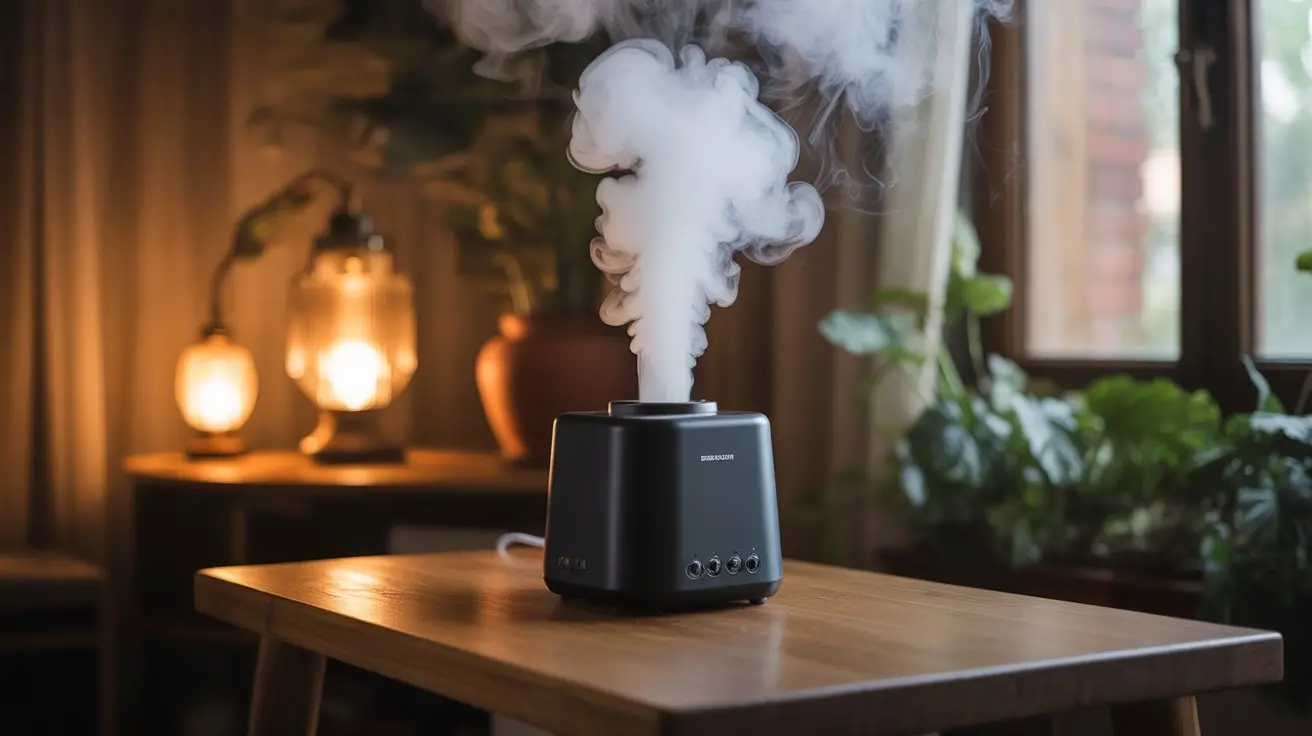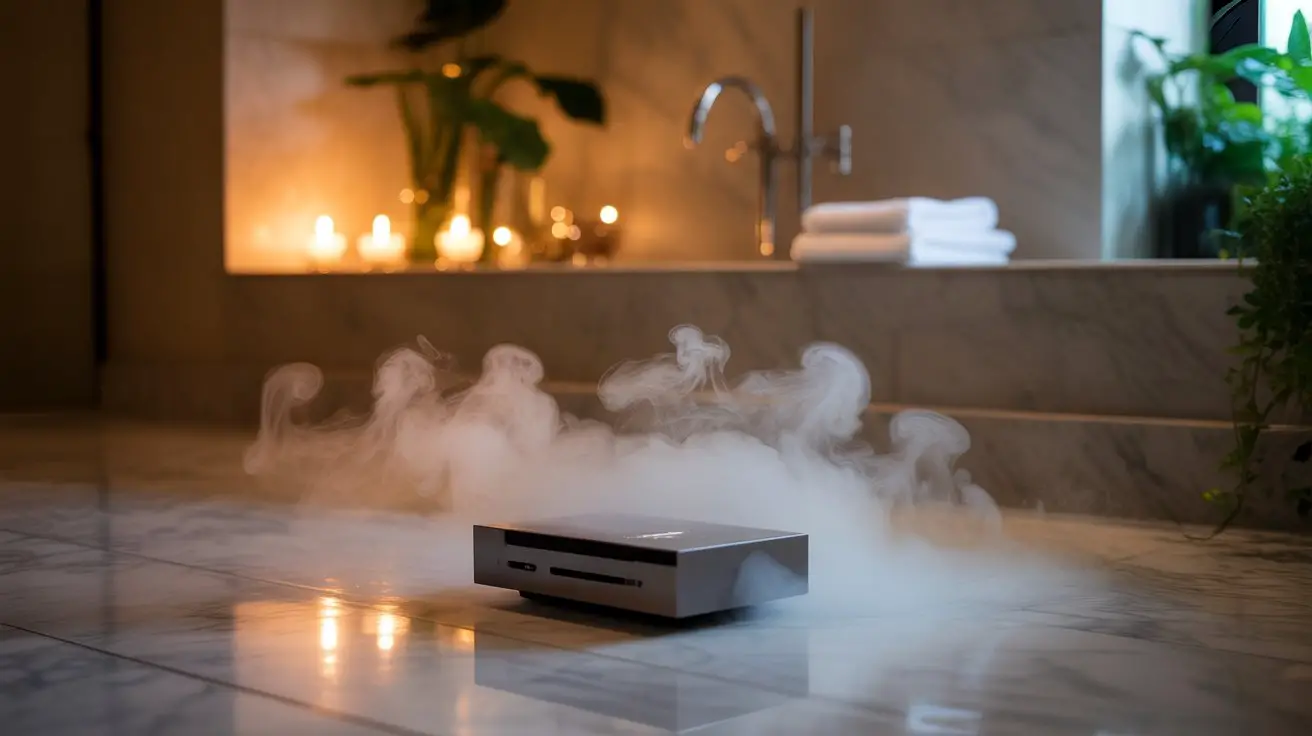You’re dealing with a confined space where fog density can quickly reach dangerous levels, obscuring exits and creating panic situations. Small rooms amplify every safety risk – from respiratory irritation to complete visibility loss in seconds. Your ventilation system becomes critical, but standard calculations don’t account for rapid fog saturation in tight quarters. The wrong fluid choice or output setting can violate fire codes and endanger occupants before you realize what’s happening.
Choosing the Right Fog Machine for Limited Space
Small venues demand precise fog machine selection to prevent hazardous visibility reduction and guarantee adequate ventilation capacity.
You’ll need machines with adjustable output controls and timer functions to maintain code-compliant visibility levels. Calculate your room’s cubic footage, then select units producing no more than 0.5 cubic feet of fog per minute per 100 square feet of floor space.
Choose water-based fog fluids exclusively—they’re non-toxic and dissipate faster than oil-based alternatives.
Confirm your selected machine includes automatic shut-off features and remote operation capabilities for emergency situations. Position fog machines at least three feet from walls and exits to prevent accumulation in critical egress paths.
Install smoke detectors compatible with fog effects, and maintain minimum six-foot clearances above the machine to prevent overheating and fire hazards. Additionally, be aware that fog machines can trigger fire alarms due to smoke particles, so it’s essential to test the alarm system before use.
Selecting Safe Fog Fluids for Indoor Use
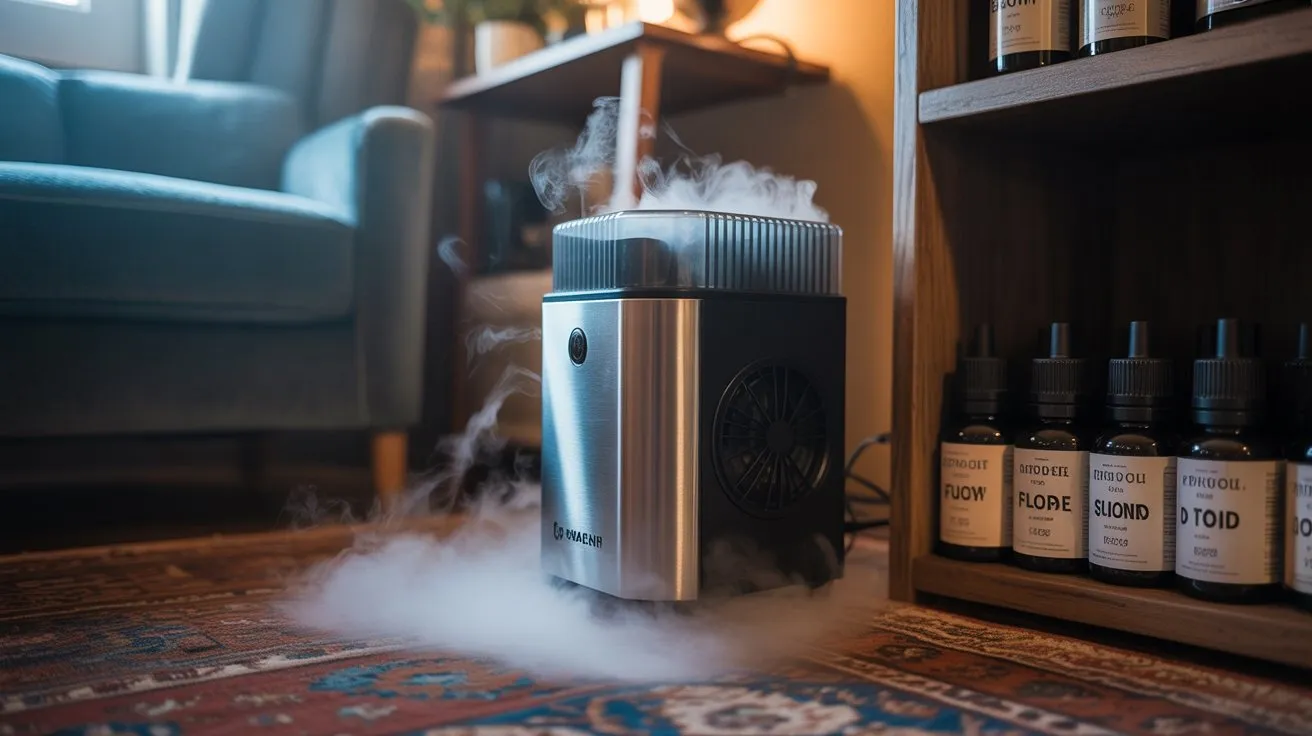
When selecting fog fluids for indoor applications, you must prioritize formulations that meet stringent safety standards and won’t compromise air quality or trigger respiratory issues.
Choose water-based fluids over oil-based alternatives, as they produce cleaner vapor with reduced particulate matter. Verify that fluids comply with FDA, MSDS, and local fire codes.
Avoid glycol-based formulations in confined spaces, as they can cause respiratory irritation and leave residues on surfaces.
Select fluids specifically labeled for indoor use with low-irritant certifications. Check ingredient transparency—quality manufacturers list propylene glycol, distilled water, and approved additives.
Avoid fluids containing diethylene glycol, mineral oils, or unmarked chemical compounds.
Store fluids in original containers at manufacturer-specified temperatures.
Always test compatibility with your machine’s heating element specifications to prevent equipment damage or hazardous vapor production. Additionally, it is essential to ensure that the selected fluid is glycol-based smoke fluid to achieve the desired fog effect without compromising safety.
Establishing Proper Ventilation and Air Circulation
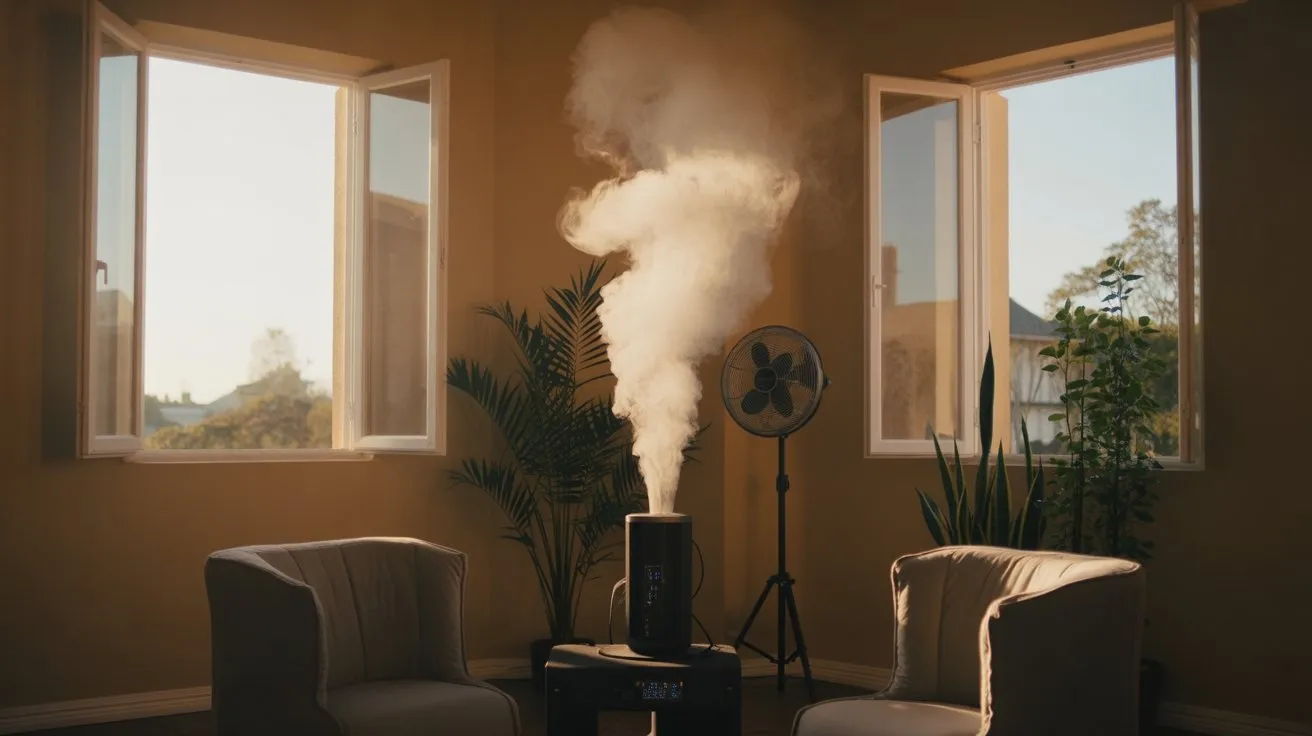
Proper ventilation systems form the cornerstone of safe indoor fog machine operation, requiring calculated air exchange rates that prevent vapor accumulation while maintaining visibility effects. You’ll need minimum 6-8 air changes per hour for rooms under 500 square feet. Install exhaust fans at ceiling level where fog naturally rises, positioning intake vents near floor level to create proper circulation patterns. It is essential to consider the potential health risks associated with fog machines to ensure that all occupants remain safe during use.
| Room Size (sq ft) | Air Changes/Hour | CFM Required | Exhaust Fan Rating | Intake Vent Size |
|---|---|---|---|---|
| 100-200 | 8 | 110-220 | 250 CFM | 6″ diameter |
| 201-300 | 7 | 235-350 | 400 CFM | 8″ diameter |
| 301-400 | 6.5 | 325-430 | 500 CFM | 10″ diameter |
| 401-500 | 6 | 400-500 | 600 CFM | 12″ diameter |
Monitor CO2 levels continuously, maintaining below 1000 ppm to guarantee adequate fresh air exchange and occupant safety.
Controlling Fog Output and Density Levels
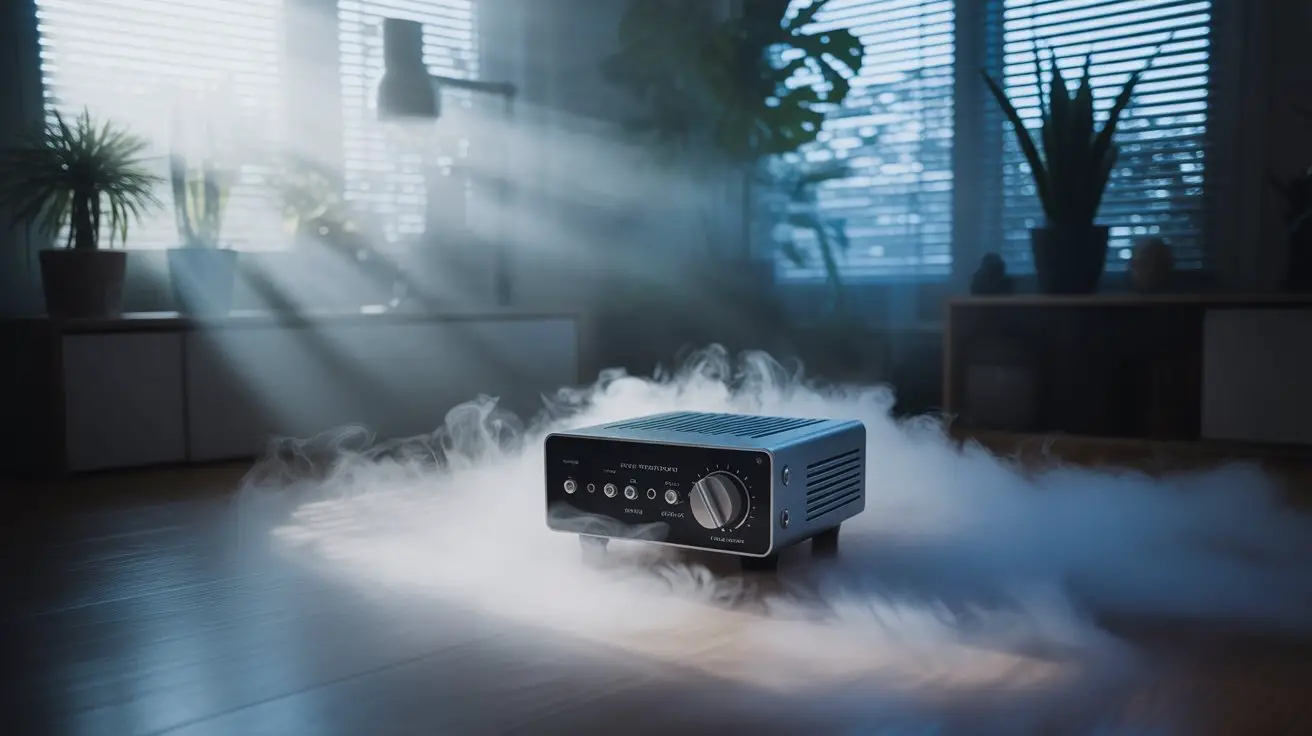
Although fog density appears purely aesthetic, you’ll need precise control mechanisms to prevent hazardous visibility conditions and respiratory exposure risks.
Install variable output controls to regulate fluid consumption rates between 10-50ml per minute, depending on room volume calculations. Monitor visibility distances continuously—maintain minimum 6-foot sight lines for emergency egress compliance.
Use timer-based cycling systems rather than continuous operation to prevent atmospheric saturation. Deploy fog density meters or optical sensors to automatically shut down equipment when particulate concentrations exceed OSHA permissible exposure limits.
Position manual override switches at room exits for immediate deactivation during emergencies. Test density controls before each use, verifying responsive adjustment capabilities.
Document output settings and atmospheric readings to establish baseline safety parameters for future operations.
Monitoring Air Quality and Visibility
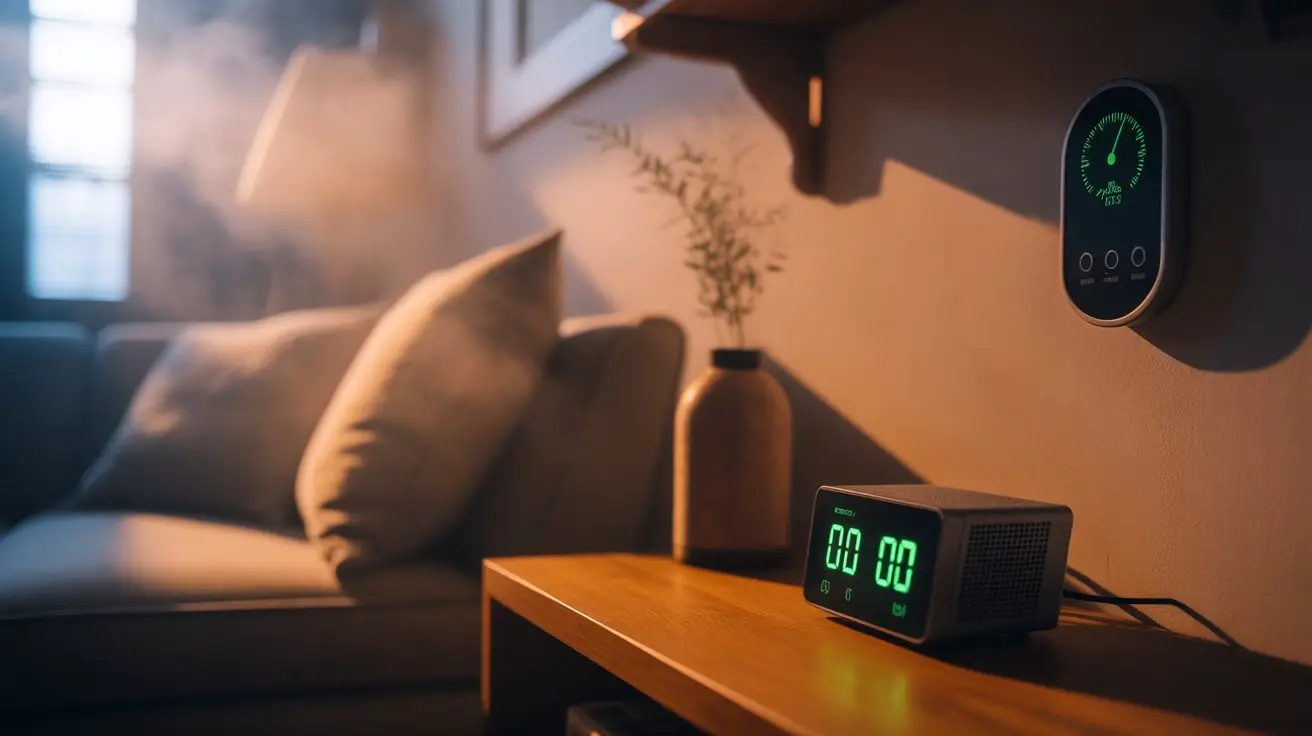
Real-time air quality monitoring requires calibrated instruments to detect particulate concentrations and maintain safe atmospheric conditions throughout fog machine operations.
You’ll need to establish measurement protocols that track visibility reduction and aerosol density levels continuously. Your monitoring system must trigger immediate shutdown procedures when particle concentrations exceed permissible exposure limits.
Critical monitoring parameters include:
- Particulate matter (PM2.5/PM10) – Track microscopic particles that can penetrate respiratory systems and cause health complications.
- Visibility distance measurements – Verify emergency egress routes remain clearly visible per fire safety codes and occupancy regulations.
- Air exchange rate verification – Confirm ventilation systems maintain adequate fresh air circulation to prevent dangerous accumulation.
Deploy multiple sensors throughout the space to identify concentration hotspots and dead air zones before they compromise occupant safety. Additionally, ensure that the fog machine operates in a well-ventilated area to minimize health risks associated with inhalation.
Positioning Equipment for Optimal Safety
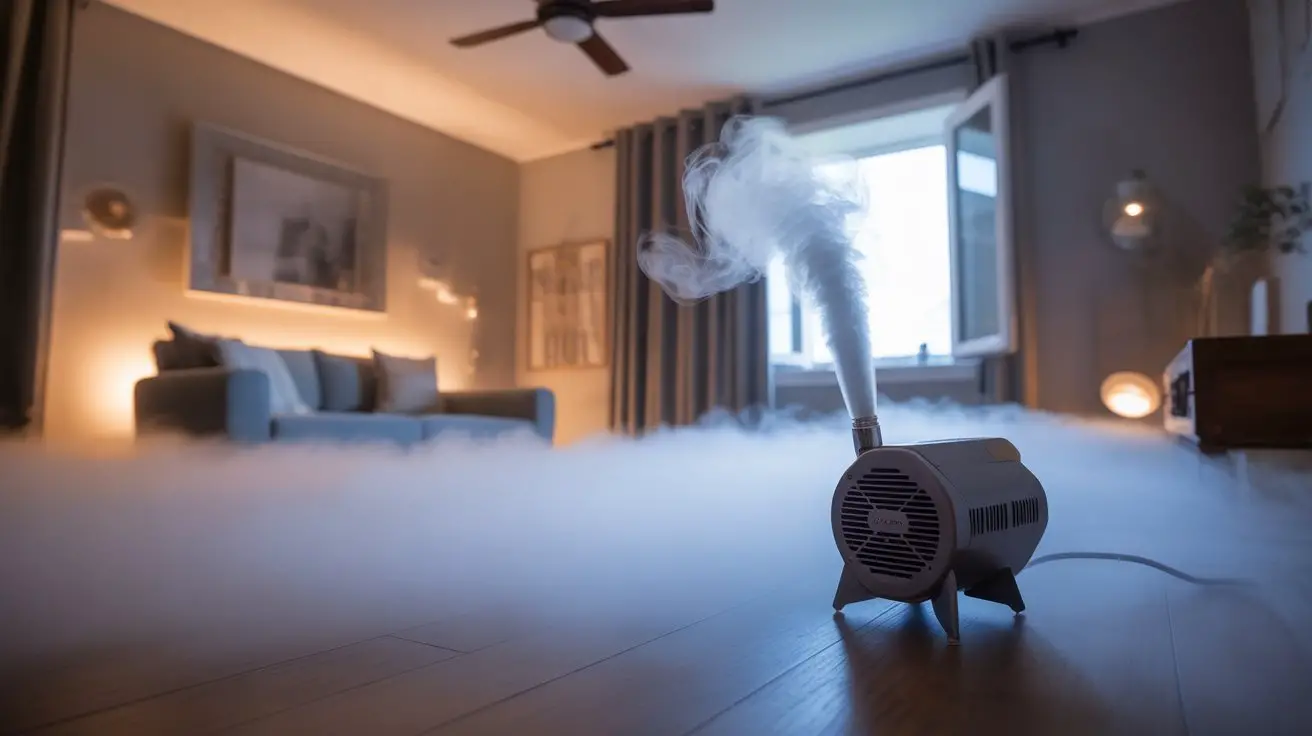
When positioning fog machines, you must maintain minimum clearance distances from exits, electrical panels, and occupied areas to prevent equipment hazards and guarantee emergency access remains unobstructed.
Position units at least 10 feet from emergency exits and maintain 3-foot clearances around electrical equipment per NFPA standards. Place machines below head height to prevent direct inhalation exposure and make certain fluid reservoirs aren’t accessible to occupants.
Avoid positioning near HVAC intakes, which can distribute fog unpredictably and overload ventilation systems. Keep units away from heat sources exceeding 100°F and make certain stable mounting on level surfaces.
Install machines where power cords won’t create tripping hazards across egress paths. Consider wind patterns and air circulation when positioning outdoor units, maintaining adequate separation from property lines and neighboring structures.
Emergency Procedures and Quick Clearing Methods
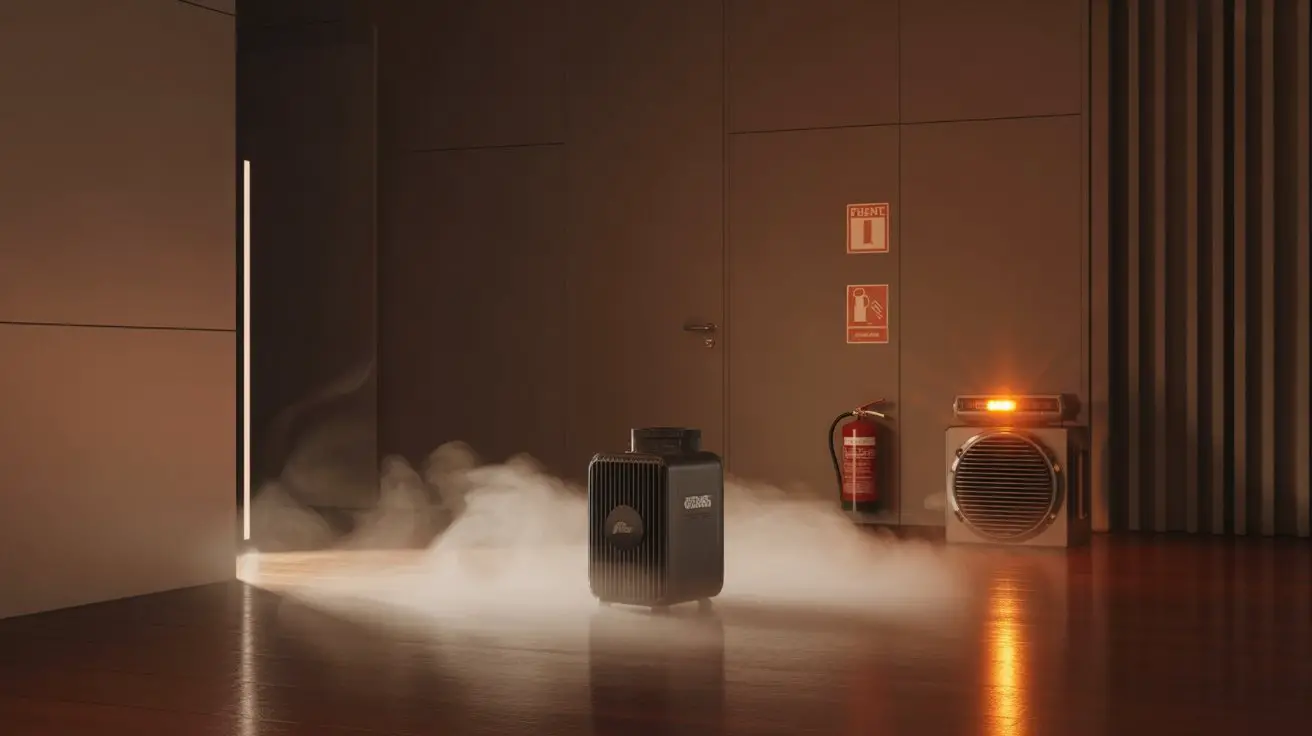
Even with proper positioning, fog machines can create visibility hazards that require immediate response protocols. You must establish clear emergency procedures before operating any fog machine in confined spaces.
When visibility drops below safe thresholds, you’ll need rapid fog dispersal methods to prevent accidents and guarantee occupant safety.
Essential emergency response procedures include:
- Immediate shutdown protocol – Cut power using dedicated emergency stops positioned at multiple access points
- Forced ventilation activation – Deploy high-capacity exhaust fans and open all available doors/windows simultaneously
- Evacuation route illumination – Install battery-powered emergency lighting along predetermined exit paths
You should maintain direct communication channels with all personnel during fog operations.
Keep fog fluid MSDS readily accessible and establish contact protocols with local fire departments.
Practice emergency drills regularly to guarantee swift response times during actual emergencies.
Frequently Asked Questions
How Often Should Fog Machines Be Cleaned and Maintained?
You should clean your fog machine after every 40 hours of operation or monthly, whichever comes first. Regular maintenance prevents fluid buildup, reduces fire hazards, and guarantees proper ventilation system compatibility in confined spaces.
Can Fog Machines Trigger Smoke Detectors or Fire Alarms?
Coincidentally, your fog machine’s glycol-based fluid won’t trigger ionization smoke detectors, but you’ll activate photoelectric detectors since they detect particle density. You must verify your building’s detector types and disable photoelectric units before operating to guarantee code compliance.
What Are the Legal Requirements for Using Fog Machines Indoors?
You must obtain permits from local fire departments, comply with venue occupancy limits, guarantee adequate ventilation meets building codes, verify insurance coverage, and follow theatrical safety regulations. Check municipal ordinances for specific fog machine restrictions.
How Long Does Fog Typically Last in a Small Room?
You’ll see fog persist 15-30 minutes in small rooms without ventilation. Duration depends on fluid type, room temperature, and air circulation. Don’t exceed recommended exposure limits—ensure adequate ventilation meets building codes.
Are There Noise Level Considerations When Operating Fog Machines Indoors?
Verily, you’ll encounter 40-70 decibel output from most fog machines’ fans and pumps. You must assess noise ordinance compliance, neighbor disturbance risks, and hearing protection requirements when operating continuously in confined residential or commercial spaces.
Conclusion
You’ve now mastered the critical safety protocols, but here’s the real test: can you maintain 6-8 air changes per hour while keeping CO2 below 1000 ppm in your specific room dimensions? Don’t assume your ventilation’s adequate—measure it. Your fog machine’s output rate, fluid selection, and positioning will determine whether you’re creating atmosphere or violating safety codes. Monitor continuously, maintain clear egress paths, and you’ll operate within acceptable risk parameters.

